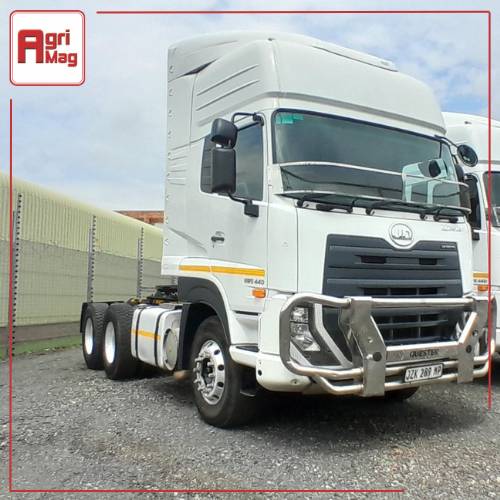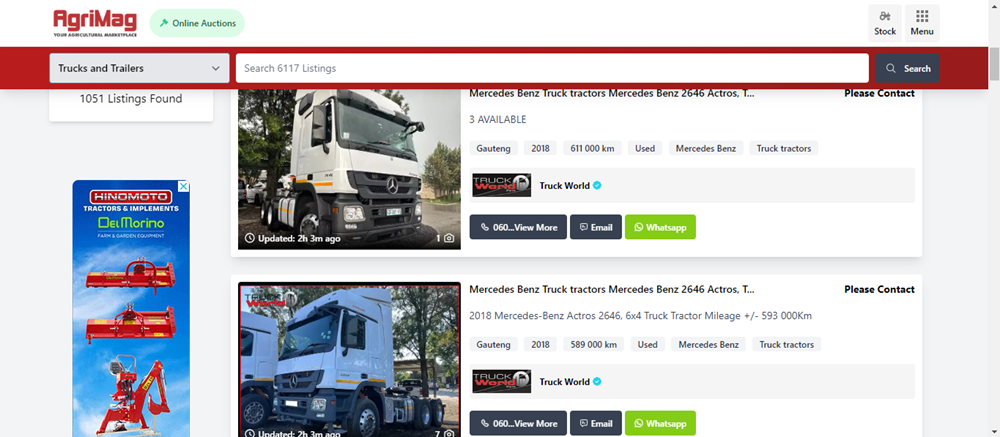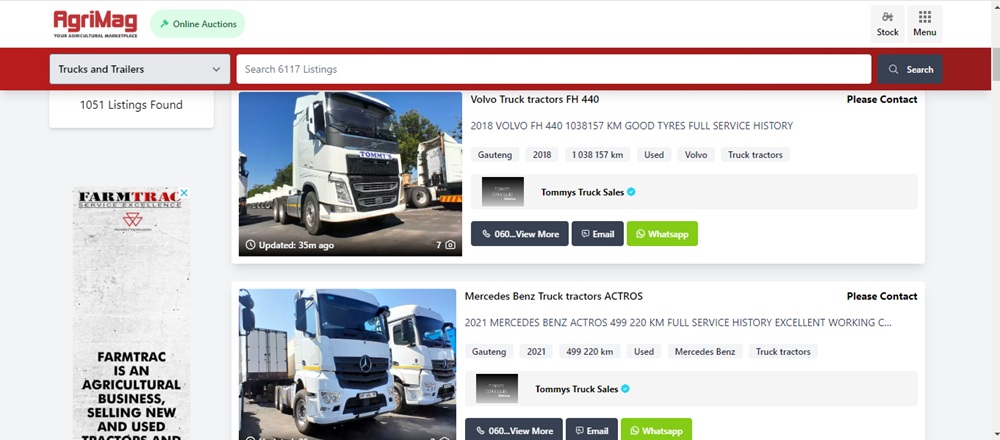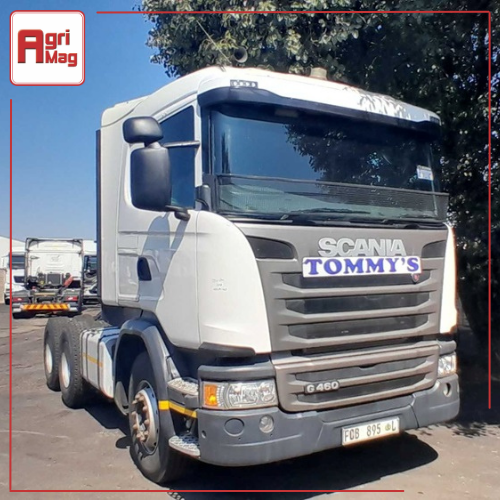
Safety Considerations for Double Axle Truck Tractors in South Africa
Date: 06/09/2023
How can we ensure the safety of double axle truck tractors on the roads? Double axle truck tractors in South Africa are pivotal to the country’s logistics and agriculture sectors. As these powerful vehicles traverse the highways and rural roads, safety becomes a critical concern. From regulatory compliance to routine maintenance, understanding the various aspects of safety can prevent accidents and ensure the smooth operation of these heavy-duty trucks. Let's take a look into the key safety considerations for these truck tractors. Check out AgriMag for additional insights and details about truck tractors.

Key safety considerations for double axle truck tractors in South Africa
Regulatory Compliance
Adhering to road safety regulations is the first step in ensuring the safety of tandem axle truck tractors. The National Road Traffic Act (NRTA) and the regulations set forth by the South African Bureau of Standards (SABS) play a crucial role in defining the safety standards for these vehicles. Key aspects include:
Vehicle Inspection: Regular inspections are mandatory to ensure that truck tractors meet safety standards. These inspections cover brakes, lights, tyres, and other critical components.
Driver Licensing: Drivers must possess a valid Code EC driver's license, which allows them to operate heavy-duty vehicles. Additionally, continuous driver training is essential to keep drivers updated on safety practices and regulatory changes.
Load Limits: Overloading is a significant risk factor. The NRTA sets specific load limits for these vehicles, and adherence to these limits is crucial for maintaining vehicle stability and road safety.
Vehicle Maintenance
Routine maintenance is vital to the safety and longevity of double axle truck tractors. Regular check-ups and timely repairs can prevent mechanical failures that could lead to accidents. Important maintenance practices include:
Brake System Checks: The braking system is one of the most critical components. Regular inspection and maintenance of brake pads, discs, and fluid levels are essential to ensure effective stopping power.
Tyre Maintenance: Tyres should be inspected for wear and tear, proper inflation, and alignment. Properly maintained tires enhance traction and reduce the risk of blowouts.
Engine and Transmission Service: Regular servicing of the engine and transmission ensures that the truck tractor operates efficiently. Oil changes, filter replacements, and checking for leaks are important to prevent breakdowns.
Suspension and Steering: The suspension and steering systems must be regularly inspected to ensure they are in good working condition. Any issues with these systems can affect vehicle handling and stability.

Driver Safety and Training
The human factor is a significant aspect of truck safety. Ensuring that drivers are well-trained and adhere to safety practices can significantly reduce the risk of accidents. Key considerations include:
Defensive Driving Training: Defensive driving techniques help drivers anticipate and respond to potential hazards on the road. Training programs should emphasize the importance of maintaining safe following distances, anticipating other drivers' actions, and navigating difficult weather conditions.
Fatigue Management: Driver fatigue is a leading cause of accidents involving heavy vehicles. Implementing strict regulations on driving hours and ensuring drivers take regular breaks can help mitigate this risk.
Health and Fitness: Regular health checks for drivers can help identify conditions that may impair their ability to operate the vehicle safely. Encouraging a healthy lifestyle can also contribute to better overall driver performance.
Emergency Response Training: Drivers should be trained in basic emergency response techniques, such as first aid and the proper use of fire extinguishers. Knowing how to handle emergencies can prevent minor incidents from escalating into major accidents.
Technological Advancements
Incorporating modern technology into double axle truck tractors can enhance safety. Several technological solutions are available to assist drivers and improve vehicle performance:
Advanced Driver Assistance Systems (ADAS): ADAS technologies, such as lane departure warning, adaptive cruise control, and collision avoidance systems, can help prevent accidents by alerting drivers to potential hazards and assisting in maintaining vehicle control.
Telematics and GPS Tracking: Telematics systems provide real-time data on vehicle location, speed, and driver behavior. GPS tracking can help monitor routes, ensure compliance with designated routes, and enhance overall fleet management.
Electronic Stability Control (ESC): ESC systems help maintain vehicle stability by automatically applying brakes to individual wheels when a loss of control is detected. This technology can be particularly useful in preventing rollovers and skidding.
Ensuring the safety of double axle truck tractors in South Africa requires a comprehensive approach that includes regulatory compliance, routine maintenance, driver training, and the integration of advanced technologies. By prioritising these safety considerations, we can reduce the risk of accidents, protect lives, and enhance the efficiency of our transportation and agricultural sectors. Remember, a well-maintained and properly operated truck is not only safer but also more reliable and cost-effective. For more insights and information on truck tractors, visit AgriMag.
Categories:
Common category
Category Search:
Latest articles:

Choosing the Right Breed for South African Climates

Managing Livestock Health in Drought Conditions: Tips for Farmers

Embracing Organic Farming in South Africa: Minimal Resources


